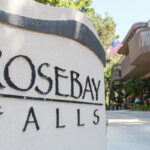CAMP PENDLETON — Changes are coming to the United States Marine Corps, and those changes will soon be reflected both on-base and offshore.
For the last two decades, the Marine Corps has spent most of its time engaging adversaries in land-based wars in Iraq and Afghanistan.
Now, the Marine Corps is pivoting its focus toward more water-based operations in the Indo-Pacific — the region of China’s weapon engagement zone.
In March 2020, Gen. David Berger, Commandant of the Marine Corps, released “Force Design 2030,” a report that explains his force structure plan and his vision for the Marine Corps by 2030.
“Our current force design, optimized for large-scale amphibious forcible entry and sustained operations ashore, has persisted unchanged in its essential inspiration since the 1950s,” Berger said in his report. “I am convinced that the defining attributes of our current force design are no longer what the nation requires of the Marine Corps.”
Specifically, Berger explains the size, capacity and specific capability of the current force is unsuited to future operations.
“Operating under the assumption that we will not receive additional resources, we must divest certain existing capabilities and capacities to free resources for essential new capabilities,” Berger said.
He explained that reducing infantry battalions and their supportive organizations — direct support artillery, ground mobility assets, assault support aviation and other support capabilities based on ground and air — is the most logical way to approach divestment.
Along with this shift to more water-based activity and amphibious operations comes a strengthened partnership with the U.S. Navy — the Marine Corps’ administrative body.
This renewed relationship is similar to the military’s focus during World War II when the Marine Corps focused on amphibious missions in the Pacific theater.
“This is us getting back to naval expedition,” said Col. Daniel Whitley, commanding officer at Camp Pendleton. “It’s really us supporting the Navy at sea.”
But this priority shift raises some questions about continued desert training at 29 Palms, which is considered the largest Marine Corps base in the nation. The move will also require changes to training units on how to deploy.
“We’re going through massive structure changes,” Whitley said.
Whitley suggested changes could include working with Navy partners onboard their different vessels or possibly work on San Clemente Island, which is owned by the Navy and is part of Los Angeles County.
San Clemente Island made news last summer when 15 Marines and one sailor were inside an amphibious assault vehicle as part of a routine training exercise when it took on water and sank off the island’s northwest boundary. Seven Marines escaped and survived but the remaining eight Marines sailor were killed.
While the base figures out how changes on the inside will look, the local outside world may not notice much of a difference besides potentially seeing more ships and vessels off the coast.
“We won’t see more Marines but what we may see is potentially less out of 29 Palms and more training on Camp Pendleton and off the coast,” Whitley said.



